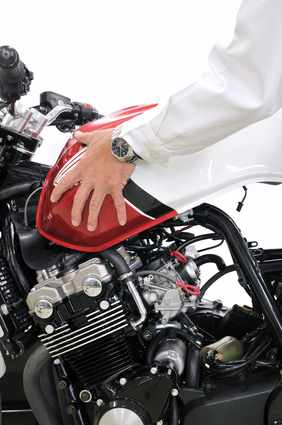 How to Check For Defective Motorcycle Parts
How to Check For Defective Motorcycle Parts
Whether your bike is just making some ugly sounds while you ride, or you’re certain that it’s acting in less than its regular prime condition, it doesn’t take a mechanical engineer to tell you that you should probably pull over and check for defects. Now, in these circumstances, it’s always best to take your motorcycle to a seasoned mechanic, but if that’s not an option for you, there are some easy things you can do to locate the problem. Maybe your bike is showing no signs whatsoever of being defective. Great, but a regular inspection is still key to safe riding.
Recent statistics show that around 178,000 injuries a year are motorcycle-related. To avoid being a contributor to this statistic, it’s vital that you check for defective motorcycle parts.
Check the Starter
No matter what types of problems your motorcycle is experiencing, if you’re embarking on a full-inspection, the most logical place to begin is with the starter. Even if the starter seems to be working fine, it’s good to do a visual inspection of the fuse for signs of damage. If your motorcycle isn’t starting up properly though, you might need to perform a simple test. Connect a black jumper wire from the negative battery post, to the green or red wire of the starter relay terminal.
Fasten the red jumper wire from the positive battery post, to the yellow or red wire terminal on the starter relay. Then, make sure to pay attention for a clicking noise – this is the contact inside the starter relay. If you don’t end up hearing this clicking noise, the starter might be malfunctioning.
Inspect the Master Cylinder
A malfunctioning master cylinder is another major element with which to be concern, as it is inescapably linked to your brakes. To test the master cylinder, ride the motorcycle for a few feet, and then stop. Next, drive it for a few feet, and hold down the brakes for a few seconds to observe how it reacts. If your brake offers no pressure, and simply goes in with no give, this is a sign of air in the brake line, and it’s actually a common reason why a master cylinder will become defective.
Maintain the Tires
Unless you have a flat tire, chances are, you’re not going to notice tire issues that may be detrimental to your safety, and the safety of others. It’s important to get in the habit of checking your tire pressure on a monthly basis – they ought to be inflated per the manufacturer’s specifications, which can be found in your owner’s manual. And, the best time to check them is when your tires are cool – not after you’ve just gone for a ride.
Checking your tires’ tread is also extremely important to remaining safe, especially on wet roads. Be sure that the tread isn’t lower than the top of Washington’s head, when the quarter is inserted all the way into the tread groove.
We Want To Help You Avoid Motorcycle Injury
Although we’ve only scratched the surface of inspecting possibly defective motorcycle parts, we’ve given you some tips on how to address some of your bike’s most vital components. Being a good rider, wearing a helmet, and following the rules of the road, are all key factors in your safety as a motorcyclist. But, even if all those things are in place, they won’t do any good if your motorcycle is about to malfunction.
So, do everything in your power not to be a part of motorcycle injury statistics. If you’ve been injured in a related accident though, don’t hesitate to contact us today!


Speak Your Mind